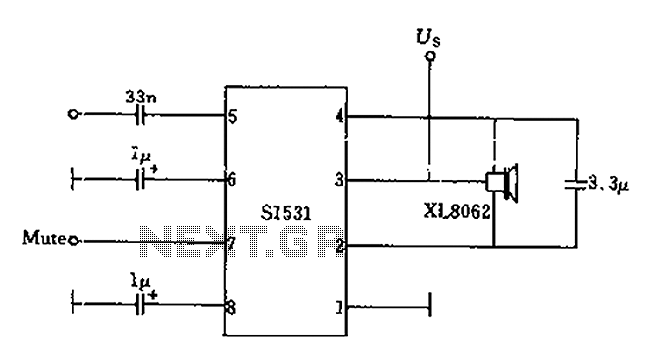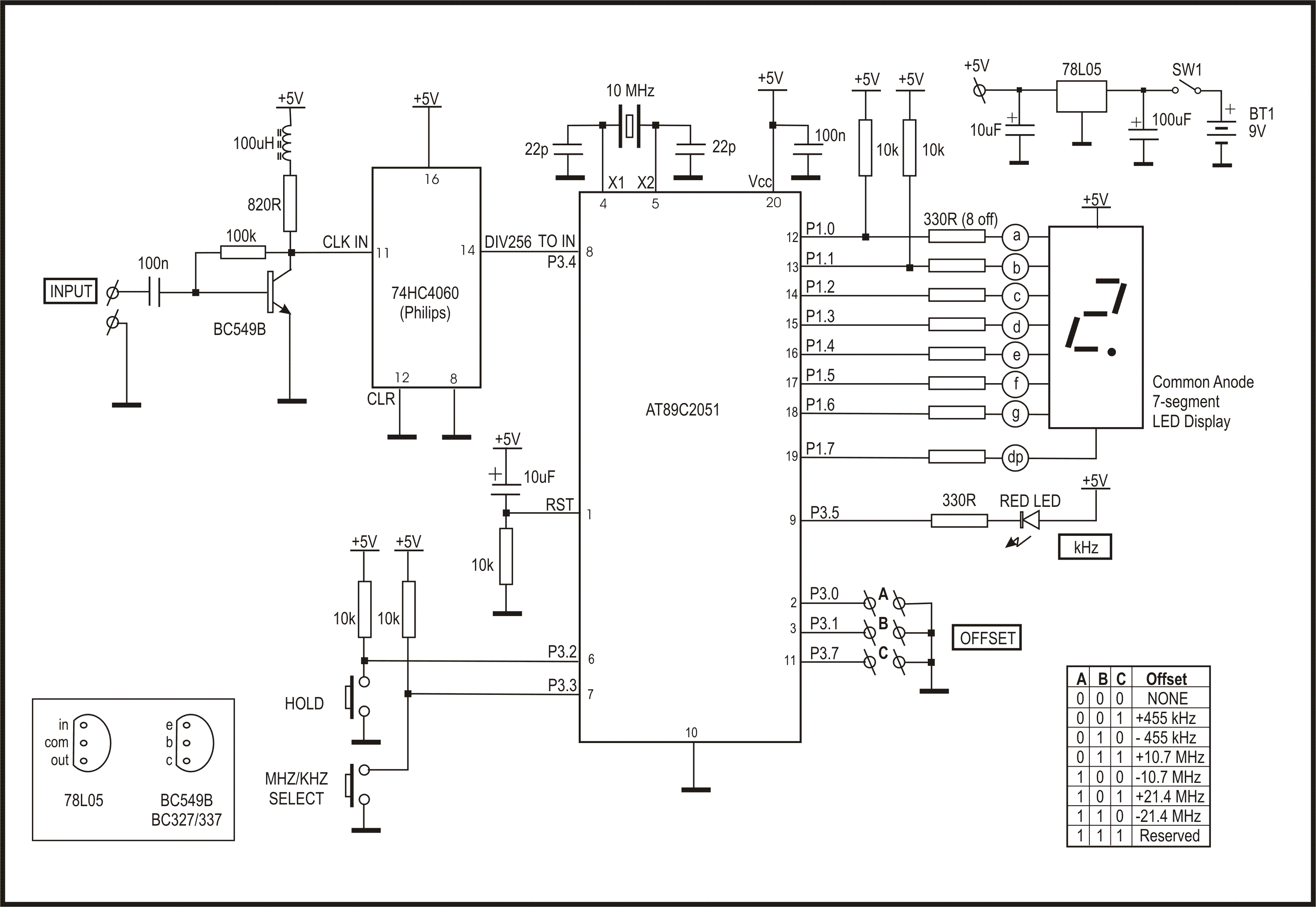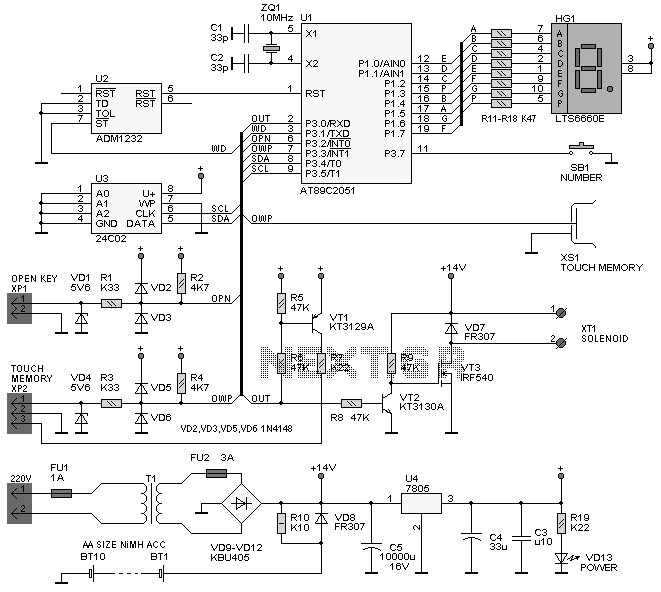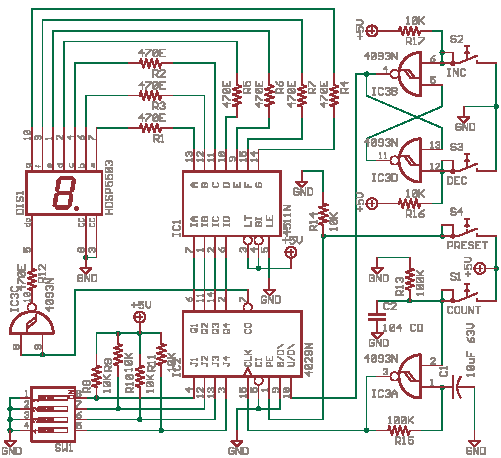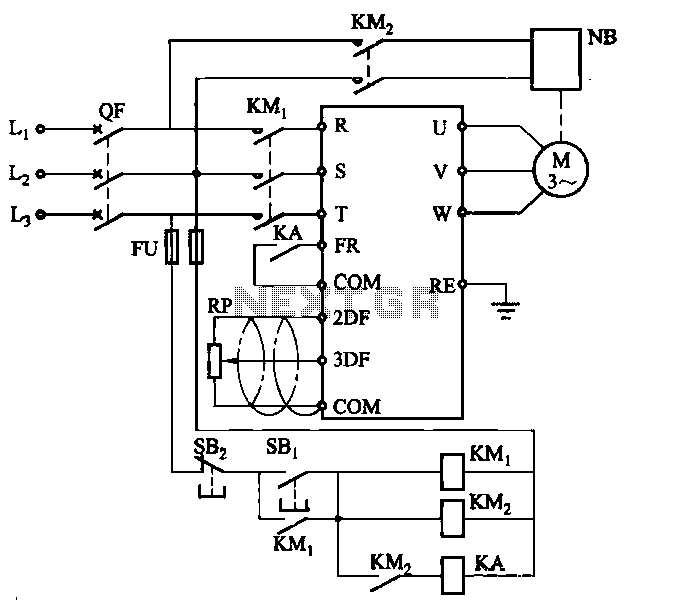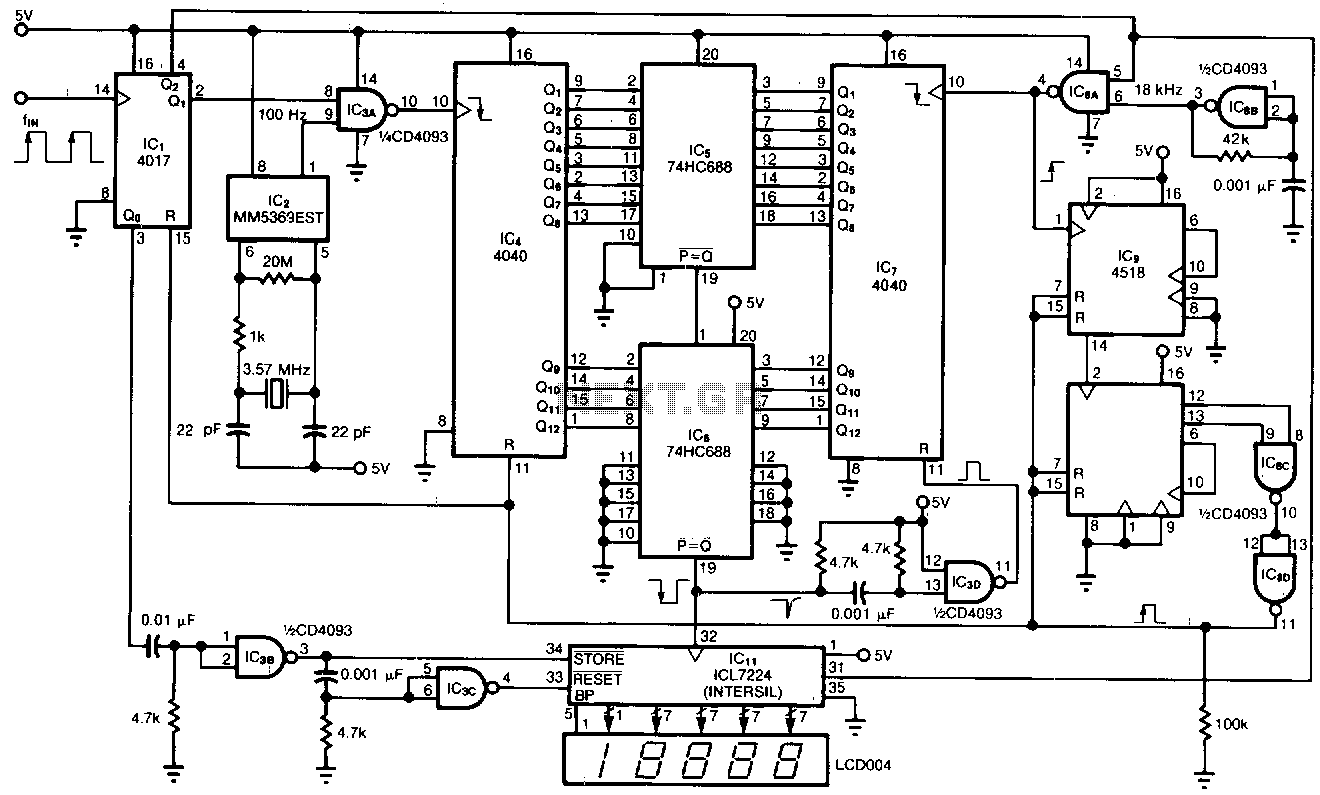
Frequency Counter
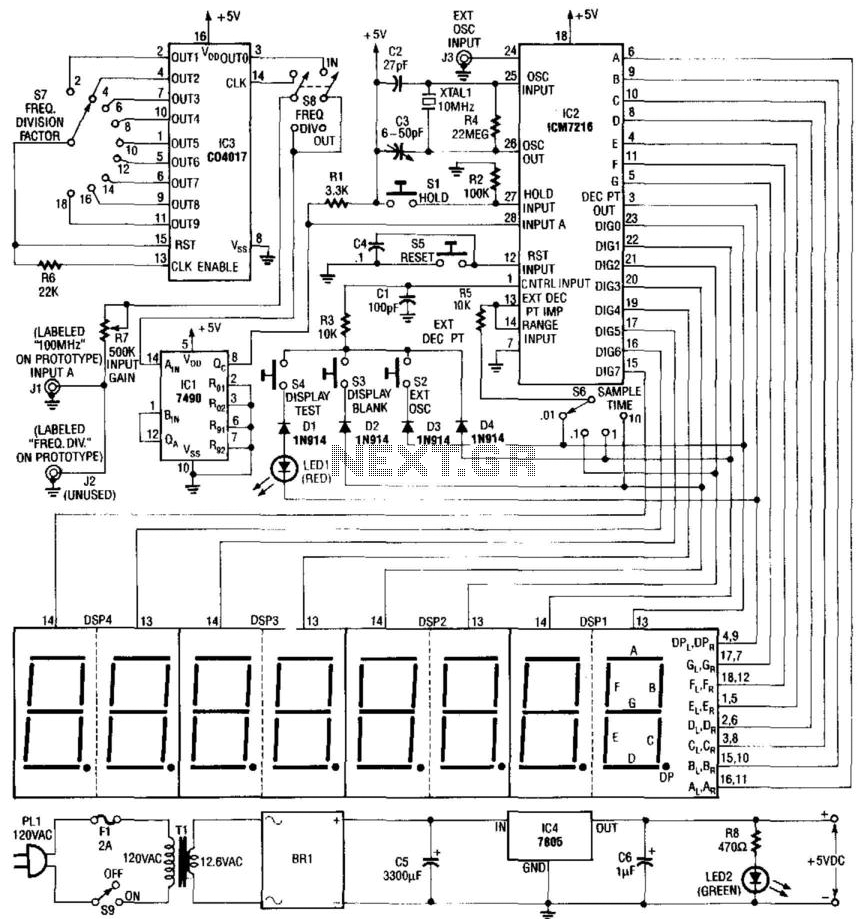
Built around an Intersil 7216 frequency counter IC, this counter has a basic range of 10 MHz, a 100-MHz prescaler, and an extra frequency divider (IC3). This divider reduces the frequency by an additional factor, as indicated on S7 (refer to the schematic), to extend the counter's range. The display is multiplexed, utilizing MAN6710 2-digit red common anode 7-segment LED displays in the prototype.
The circuit incorporates the Intersil 7216 frequency counter IC, which is designed to measure frequencies up to 10 MHz. To accommodate higher frequencies, a 100-MHz prescaler is implemented, allowing the circuit to effectively handle input signals that exceed the base frequency limit. The prescaler reduces the frequency of the incoming signal to a manageable level for the counter IC.
An additional frequency divider, designated as IC3, is included in the design. This component further divides the frequency of the signal by a specified factor, as indicated on S7 in the schematic. This capability is crucial for extending the operational range of the counter, enabling it to measure frequencies beyond 10 MHz and up to the limits imposed by the prescaler.
The output of the frequency counter is presented on a multiplexed display system. The use of MAN6710 2-digit red common anode 7-segment LED displays enhances visibility and readability of the measured frequency. The multiplexing technique allows for efficient use of the display segments, reducing the number of required connections while maintaining clear output visibility.
The overall design emphasizes precision and versatility in frequency measurement, making it suitable for various applications in electronics testing and signal analysis. The combination of the Intersil 7216, prescaler, and additional frequency divider presents a robust solution for high-frequency counting tasks. Built around an Intersil 7216 frequency-counter IC, this counter has a basic range of 10 MHz, a 100-MHz prescaler, and an extra frequency divider (IC3). This divider divides by an extra factor, as marked on S7 (see schematic), to extend the range of the counter. The display is multiplexed. MAN6710 2-digit red common anode 7-segment LED displays were used on the prototype.
The circuit incorporates the Intersil 7216 frequency counter IC, which is designed to measure frequencies up to 10 MHz. To accommodate higher frequencies, a 100-MHz prescaler is implemented, allowing the circuit to effectively handle input signals that exceed the base frequency limit. The prescaler reduces the frequency of the incoming signal to a manageable level for the counter IC.
An additional frequency divider, designated as IC3, is included in the design. This component further divides the frequency of the signal by a specified factor, as indicated on S7 in the schematic. This capability is crucial for extending the operational range of the counter, enabling it to measure frequencies beyond 10 MHz and up to the limits imposed by the prescaler.
The output of the frequency counter is presented on a multiplexed display system. The use of MAN6710 2-digit red common anode 7-segment LED displays enhances visibility and readability of the measured frequency. The multiplexing technique allows for efficient use of the display segments, reducing the number of required connections while maintaining clear output visibility.
The overall design emphasizes precision and versatility in frequency measurement, making it suitable for various applications in electronics testing and signal analysis. The combination of the Intersil 7216, prescaler, and additional frequency divider presents a robust solution for high-frequency counting tasks. Built around an Intersil 7216 frequency-counter IC, this counter has a basic range of 10 MHz, a 100-MHz prescaler, and an extra frequency divider (IC3). This divider divides by an extra factor, as marked on S7 (see schematic), to extend the range of the counter. The display is multiplexed. MAN6710 2-digit red common anode 7-segment LED displays were used on the prototype.
